Related Research Articles

The Focke-Wulf Fw 44 Stieglitz (Goldfinch) is a 1930s German two-seat biplane. Designed by Kurt Tank in 1931, it was the Focke-Wulf company's first major international success. Produced as a pilot training and sports flying aircraft. It was also built under license in several other countries.

The Heinkel He 45 was a light bomber produced in Germany in the early 1930s, one of the first aircraft adopted by the newly formed Luftwaffe. Its appearance was that of a conventional biplane and included seating for pilot and gunner in tandem, open cockpits. Developed in parallel with the He 46, it appeared in 1931 as a general-purpose biplane and was employed mainly as a trainer, but was also used by the Luftwaffe for reconnaissance and light bombing duties. Production of this plane totalled 512 aircraft, including those built under licence by Gotha, Focke-Wulf, and BFW.

The Albatros L 75 Ass was a German trainer biplane of the 1920s. Of conventional configuration, it seated the pilot and instructor in separate, open cockpits. The wings were single-bay, equal-span, and had a slight stagger. Production continued after Albatros was absorbed by Focke-Wulf.
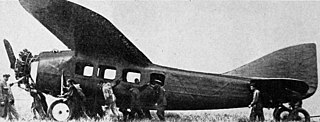
The Bernard 18 was a prototype airliner developed in France in the 1920s. One of the two prototypes built was used in an abortive transatlantic crossing attempt and a number of failed attempts for aerial records.

The Blume Bl.500, Bl.502, and Bl.503 were a family of four-seat light aircraft designed in West Germany by Dr Walter Blume in the late 1950s.

The Piaggio P.149 is a 1950s Italian utility and liaison aircraft designed and built by Piaggio. The aircraft was built under licence by Focke-Wulf in West Germany as the FWP.149D.
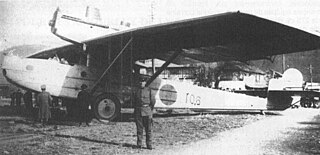
The Dornier N was a bomber aircraft designed in Germany in the 1920s for production in Japan. Production of 28 aircraft started in Japan in 1927, as the Kawasaki Ka 87. Designed and built as a landplane, its layout was strongly reminiscent of the Dornier flying boats of the same period; a parasol-wing, strut-braced monoplane with two engines, mounted in a push-pull nacelle above the wing. Some of the 28 examples built saw action in Manchuria in 1931.
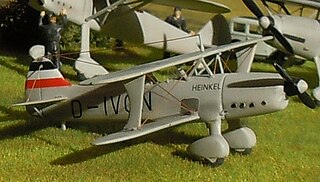
The Heinkel He 74 was a light fighter aircraft developed in Germany in the early 1930s. It was a conventional, single-bay biplane with staggered, unequal-span wings braced with an I-type interplane strut. The pilot sat in an open cockpit, and the undercarriage was of the fixed, tailskid type.

The Focke-Wulf A 17 Möwe was an airliner built in Germany in the late 1920s. It was a conventional high-wing cantilever monoplane with fixed tailwheel undercarriage. The aircraft provided fully enclosed seating for up to eight passengers and had a separate, fully enclosed flight deck for the two pilots. Most examples flew with Deutsche Luft Hansa, serving until around 1936. In the early 1930s, two A 17s were used for testing the Junkers Jumo 5 diesel engine.

The Focke-Wulf A 20 Habicht was an airliner developed in Germany in the late 1920s. It was a high-wing cantilever monoplane with fixed tailskid undercarriage. The fuselage was deep and seated four passengers in a fully enclosed cabin. The type was not bought by the airlines and only a few examples were built.

The Focke-Wulf A 32 Bussard was a small airliner produced in Germany in the early 1930s. It was developed rapidly at the request of NOBA when Messerschmitt was unable to deliver aircraft on schedule. Based closely on the A 20, the A 32 had a revised fuselage with greater seating capacity, and an engine of over twice the power. The two examples operated by NOBA became part of Deutsche Luft Hansa's fleet in 1934.

The Focke-Wulf A 33 Sperber was a small airliner, produced in Germany in the early 1930s. It was a high-wing cantilever monoplane of conventional design, resembling a scaled-down version of the contemporary A 32 design. Only three examples were built, each purchased for air taxi duties with separate German airlines. One eventually briefly joined the fleet of Deutsche Luft Hansa in 1937.

The Focke-Wulf A 38 Möwe was an airliner, produced in Germany in the early 1930s. It was a final development of the family of designs that commenced with the A 17 in 1927. The A 38 used the same high-mounted, cantilever wing as the A 29, but mated this to an all-new fuselage design with enclosed seating for ten passengers and three crew. Unlike earlier members of the family, the flight deck was not joined to the cabin, separated now by a lavatory and baggage compartment. The main undercarriage was strengthened and the mainwheels fitted with brakes, while the tailskid was replaced with a tailwheel. All four A 38s were originally fitted with Siemens- or Gnome et Rhône-built Bristol Jupiter engines, but in April 1933, all aircraft were refitted with Siemens Sh 20 powerplants. By mid-1934, they had been relegated to training duties.
The Focke-Wulf Fw 47 Höhengeier, known internally to Focke-Wulf as the A 47, was a meteorological aircraft developed in Germany in 1931. It was a parasol-wing monoplane of largely conventional design, unusual only in the expansiveness of its wing area. Tested first by the Reichsverband der Deutschen Luftfahrtindustrie, and then the weather station at Hamburg, the type was ordered into production to equip ten major weather stations around Germany.

The Focke-Wulf F 19 Ente was a German experimental "canard" aircraft in the late 1920s.

The Focke-Wulf S 2 was a trainer aircraft built in Germany in the late 1920s. It was a conventional parasol-wing monoplane with fixed tailskid undercarriage. The pilot and instructor sat side by side in an open cockpit. Only a single example was built.
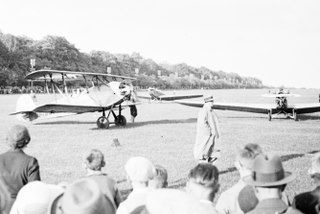
The Focke-Wulf S 24 Kiebitz was a sport aircraft built in Germany in the later 1920s. It was a single-bay biplane of conventional design with equal-span, unstaggered wings, braced with N-type interplane struts. The pilot and a single passenger sat in tandem open cockpits, and it was fitted with a fixed tailskid undercarriage. The wings could be folded for transportation or storage, and the aircraft was designed to be towed by a car.
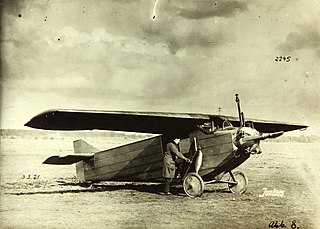
The Junkers K 16 was a small airliner produced in Germany in the early 1920s. It was a conventional, high-wing cantilever monoplane of all-metal construction, equipped with fixed, tailwheel undercarriage. The pilot sat in an open cockpit, while the two passengers were provided with an enclosed cabin within the fuselage. Shortly after the prototype flew, aircraft production in Germany was brought to a complete halt by the Allies, and the K 16 was quickly evacuated to the Netherlands to avoid confiscation. There, it was stored by Fokker until the restrictions were relaxed and work recommenced at Junkers' Dessau factory in 1924. By this time, however, the airline niche that the tiny K 16 had been intended to fill no longer existed, and the small number that were produced were mostly sold to private owners. Junkers entered two K 16s in the 1925 Deutsche Rundflug, with one machine winning second place in the competition.

The Kalinin K-5 was an airliner produced in the Soviet Union in the 1930s, built in larger quantities than any other Soviet airliner of its time, with some 260 aircraft constructed. It was a conventional, high-wing, strut-braced monoplane with a fully enclosed cabin and cockpit, and followed the general pattern developed by Kalinin in his earlier designs, though on a larger scale.

The Manshū MT-1 Hayabusa was an airliner produced by the Japanese Manchuria Airplane Manufacturing Company in Manchukuo in the late 1930s. It was a conventional, low-wing cantilever monoplane with fixed tailwheel undercarriage. The flight deck was fully enclosed and separate from the passenger cabin, which could seat six people. The type equipped Manchukuo National Airways.
References
- Taylor, Michael J. H. (1989). Jane's Encyclopedia of Aviation. London: Studio Editions. p. 395.
- World Aircraft Information Files. London: Bright Star Publishing. pp. File 894 Sheet 29.
- Zuerl, Walter (1941). Deutsche Flugzeug Konstruktteuire. München: Curt Pechstein Verlag. pp. Teil 336.
- Taylor, Michael J. H. (1989). Jane's Encyclopedia of Aviation. London: Studio Editions. p. 395.
- ↑ Zuerl 1941, p. 201.